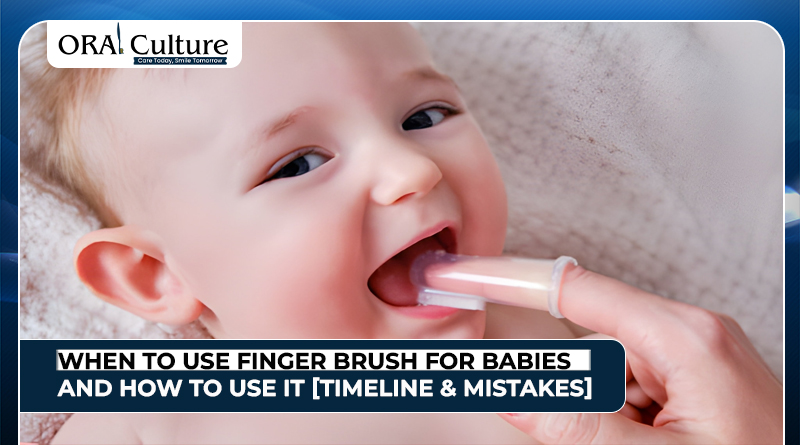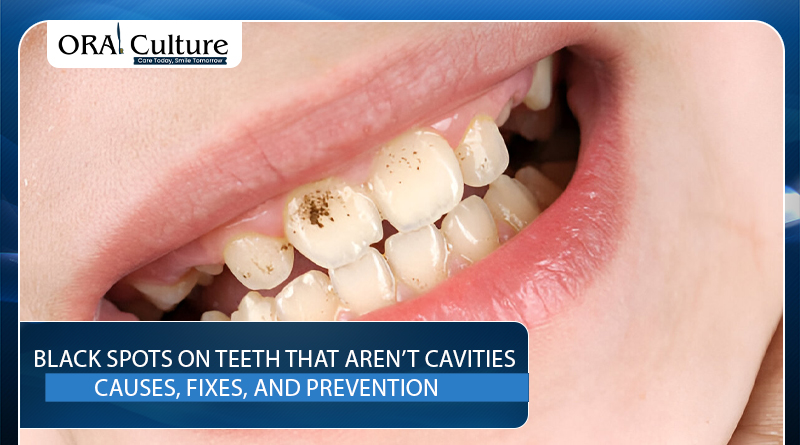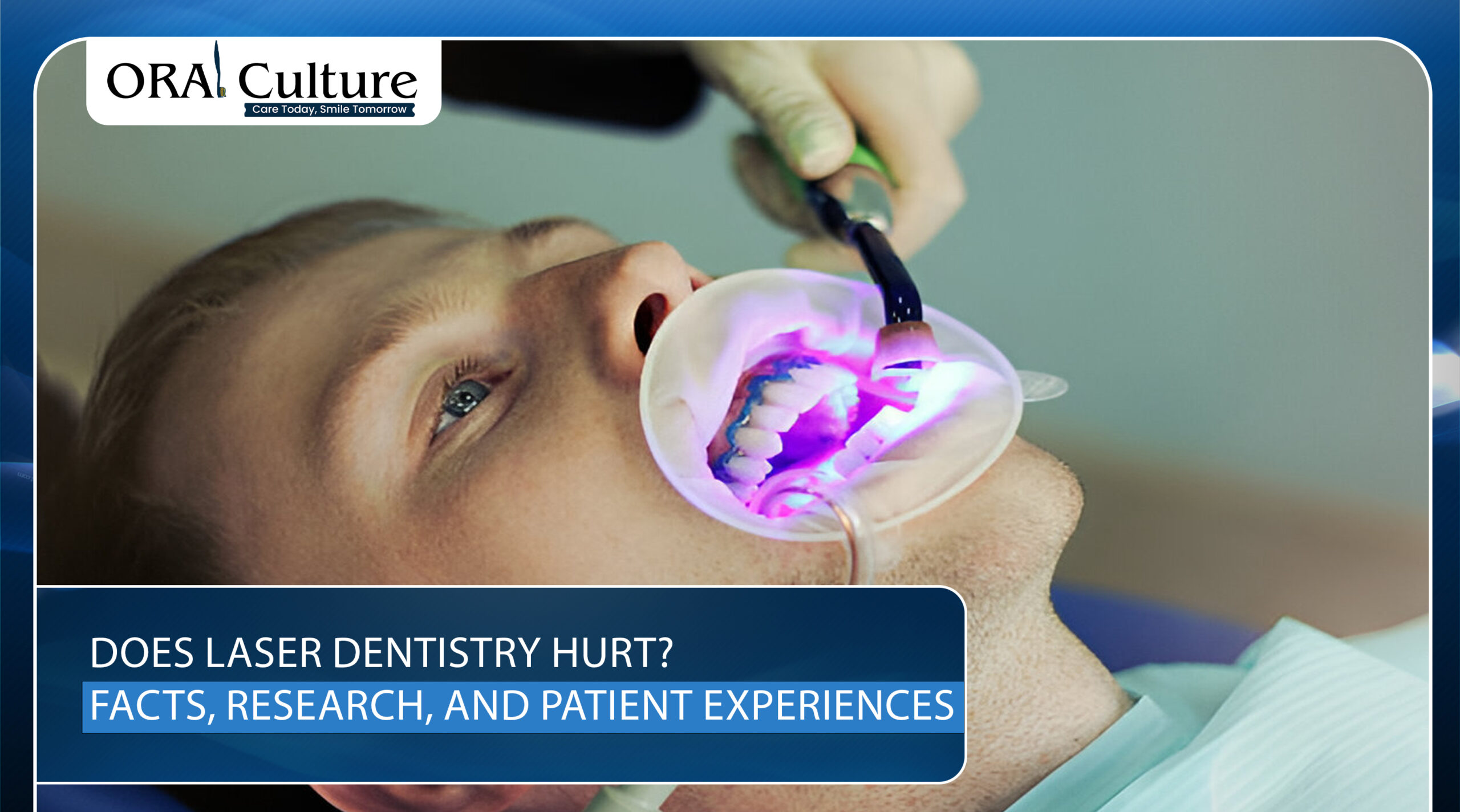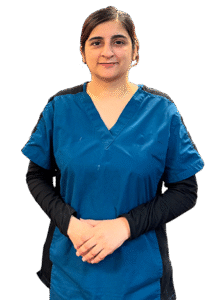You don’t wait for teeth. You use a finger brush for babies from the very beginning.
Yes, even when it’s just gums. That’s the whole point. Most parents think oral care starts with the first tooth, but the real flex is starting earlier.
A finger brush is like that training wheel for baby dental care; it gets your little one used to brushing while keeping things clean.
Wait… What Even Is a Finger Brush?
Think of it like a mini toothbrush that goes on your finger. Soft silicone, tiny bristles, nothing sharp. It looks silly, but babies love it more than a stiff plastic brush. Because it feels like a gentle gum massage instead of a pokey stick.
Plus, you are in control. You know how babies wiggle, scream, and try to chew everything? With a finger brush, your hand moves with them, not against them.
So… When Should You Actually Start?
We have rounded up a simple timeline:
Day One to 6 Months (Gum Days)
Start right away. Use the finger brush once or twice a day with just water, even if the children don’t have any teeth. This cleans the gums, removes milk residue, and helps your infant become used to brushing.
Around 6 Months (First Tooth Alert)
When the first tooth pops up, it’s time to brush that tooth and the gums. Use gentle circular motions. Still no toothpaste unless your dentist says otherwise.
12–18 Months (Mini Smile Era)
By this age, more teeth have arrived. You can stick with the finger brush for a while, but soon it’s time to upgrade to a soft baby toothbrush designed for toddlers.
Start from day one, continue through teething, and move on to a toothbrush when your baby is ready for the next stage.
Why Bother Cleaning Before Teeth?
Cleaning gums early helps prevent bacteria build-up and future gum issues. Even adults struggle with gum health, like bleeding gums when flossing, if early habits aren’t formed.
Germs Don’t Wait for Teeth
Milk coats the gums, and bacteria love it. Even if there are no teeth, germs can build up in the mouth. Cleaning early keeps that under control.
Fresh Baby Breath is Real
Yes, babies can get stinky breath. A quick daily clean stops sour milk residue from hanging around and keeps their little mouths fresh.
Training for the Future
When gums get used to brushing, transitioning to a real toothbrush is way smoother. Babies who start early are less likely to resist brushing as toddlers.
Relief for Teething Gums
A finger brush doubles as a gum massage tool. Babies often calm down when sore gums are gently massaged; it feels good.
Cavities Don’t Wait Either
Pediatric dentists warn that cavities can form when the first tooth comes in. Starting early means you’re ahead of the problem, not chasing it later.
Johns Hopkins Medicine says cavities can start when the first tooth shows up. So, it’s kinda smart to get ahead of the game.
So yeah, this isn’t just “mom group advice.” Science backs it.
How to Use a Finger Brush for Your Baby Without Making It Weird
Step 1: Clean Up First
Wash your hands and rinse the finger brush well. Babies put everything in their mouths, so hygiene matters here.
Step 2: Slip It On
Place the brush on your index finger. It gives you the most control and feels natural when moving around the gums.
Step 3: Get Your Baby Settled
Sit your baby on your lap or hold them close. Calm is ideal, but don’t stress if they squirm—it’s normal.
Step 4: Gentle Circles, Not Scrubbing
Rub along the gums and any tiny teeth in small, light circles. Think of it like polishing, not scrubbing. The brush should glide, not press.
Step 5: Keep It Simple
Plain water is enough at this stage. No toothpaste unless your dentist specifically recommends it.
Step 6: Nighttime is Key
If you only manage once a day, make it before bedtime. That’s when leftover milk harms new teeth and gums the most.
Pro tip: Do it before bed. That’s when leftover milk causes the most damage.
A Story That Explains It Better…
Meet Aliyah, mom of a 7-month-old. She thought brushing started after a full set of teeth. By 10 months, her baby had two tiny teeth but already showed white spots (early cavity signs).
Her dentist told her, “You should’ve been cleaning the gums months ago.” Now she swears by the finger brush and tells all her friends not to wait.
Teaching kids proper brushing from the start lowers their risk of problems like discoloration later on. Many adults still wonder why their teeth look yellow even if they brush every day.
When Do You Move On from the Finger Brush?
Around 12–18 months, most babies have enough teeth for a small soft-bristle toothbrush. But some parents still keep the finger brush around for quick clean-ups or gum massage. It’s not a one-and-done tool; it’s part of the journey.
Starting early makes brushing less of a battle later. But if your toddler already hates the dentist, you should know what to do when a child refuses dental treatment.
4 Common Rookie Mistakes with Finger Brushes
1- Waiting Until Teeth Appear
Many parents think brushing starts with teeth. It doesn’t. Oral care should begin with the gums on day one.
2- Bringing Toothpaste Too Early
Under 18 months, babies don’t usually need toothpaste. Water alone does the job unless your dentist says otherwise.
3- Skipping the Night Clean
This one hurts the most. At night, milk sugars sit on gums and teeth, feeding bacteria. Always clean before bed.
4- Going Too Hard
Baby gums are soft and sensitive. Gentle circles are enough. Think “massage,” not “scrub a dirty pan.”
The Final Word
Finger brushes are low-key underrated. They prevent cavities, soothe teething pain, and make brushing later way less dramatic. Start early, keep it consistent, and thank yourself later when your toddler doesn’t treat brushing like a wrestling match.
Want to check out baby oral care tools that actually work? Visit Oral Culture.
People Also Ask
Can I use a finger brush for my newborn?
Yes. It’s gentle enough for gums right from birth. Early cleaning keeps the mouth fresh and gets your baby comfortable with brushing.
How many times should I use it?
Once or twice a day works well. If you only do it once, make sure it’s at night before bed. That’s the most important time.
Do I need baby toothpaste?
No. Plain water is enough for babies under 18 months unless your dentist says otherwise.
Is using a finger brush really necessary?
Yes. It’s not just about cleaning; it trains your baby for future brushing and helps prevent early cavities.
Can I hurt my baby’s gums?
Not if you’re gentle. Finger brushes are made with soft silicone designed for sensitive gums.





